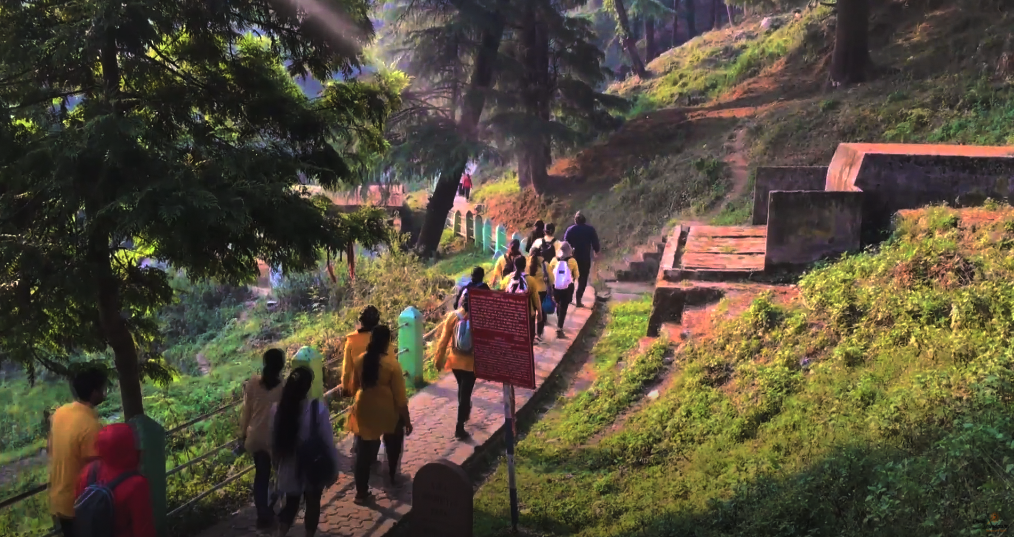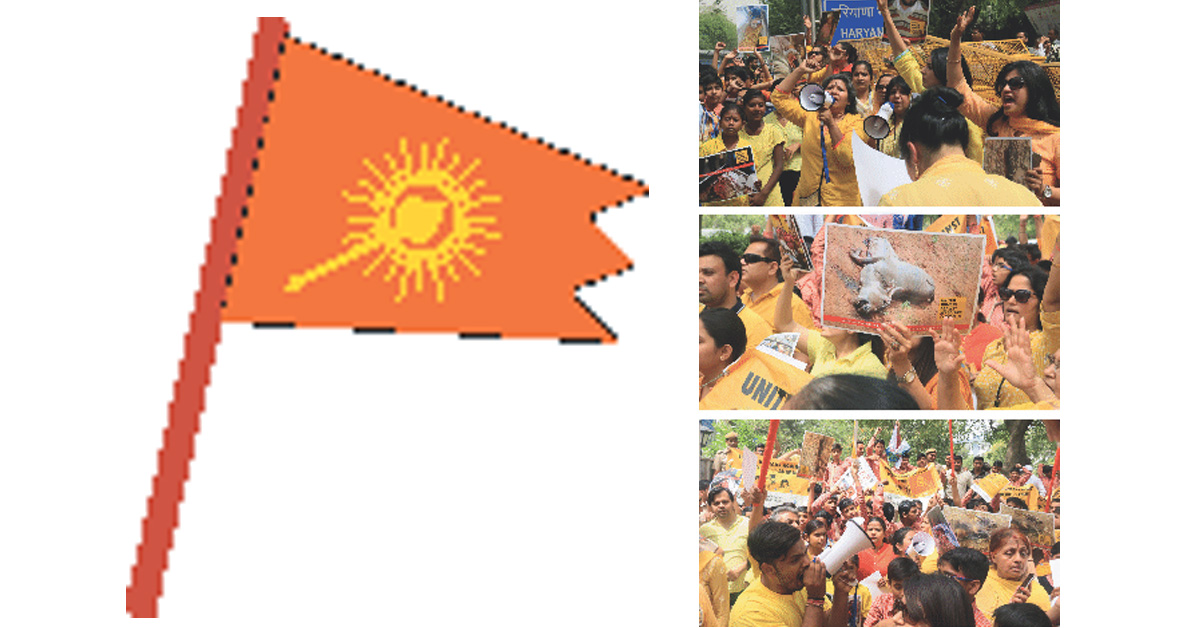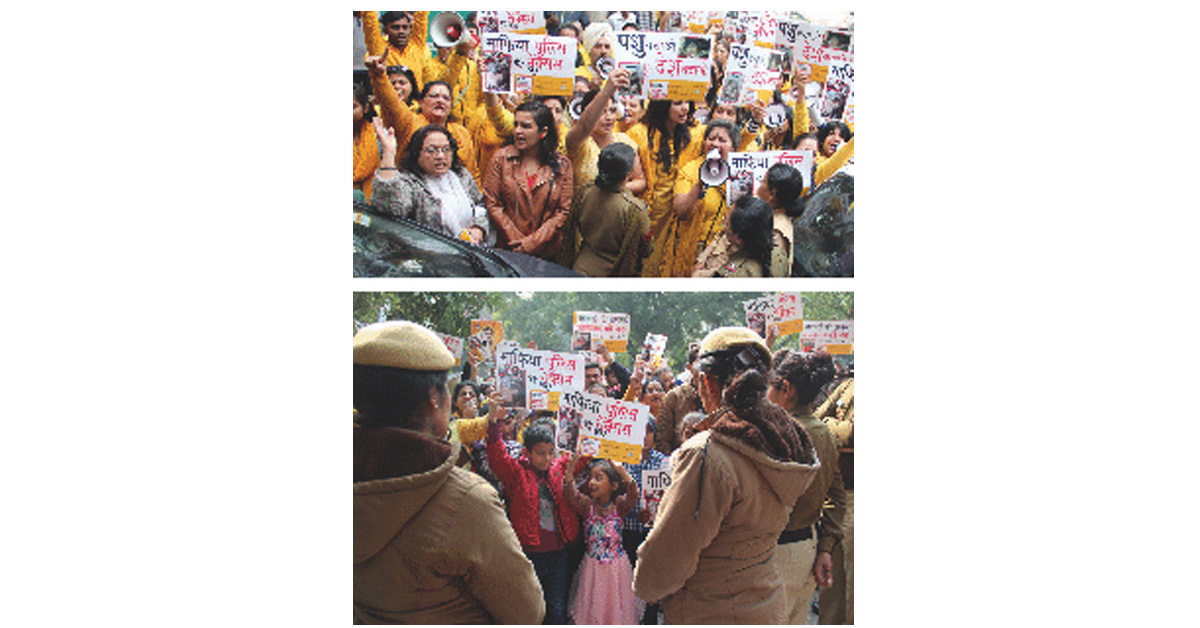In this issue, we will be exploring the amazing Patal Bhuvaneshwari caves in the Himalayas. If you search the internet, the so-called researchers will call it a limestone cave, and the formations inside the cave would be attributed to natural volcanic eruptions. Such hypothesises aren’t funny. Pataal Bhuvaneshwari is a dimension by itself. We will be revealing its truth to the readers.
As we go inside the cave, it is pitch dark — a deep cave, kind of a crevice which is going down and down. Our scriptures tell us that earth is only one dimension, also called the bhuloka. There are dimensions above: bhuvah, svah, maha, jana, tapa and satya and there are dimensions below: atal, vital, sutal, talatal, mahatal, rasatal and pataal. As the soul leaves the body, depending on the karmas it takes the upward or the downward journey. Upward journey is the journey of light, the downward journey is what it is like to move down this crevice, a journey of darkness. The soul is sucked inside due to its bad karmas, there is no light, no partner or friend. The soul moves alone and has no idea where it is headed.
We travelled through nearly a 100 feet tunnel to reach the first level. Now we will explore why this is not a natural formation but a creation of some super-beings. As one enters, in the ceiling air vents can be seen which draw in fresh air from outside, it is unlikely for such perfect air vents to exist so deep down naturally. The skand purana details that these caves were built by the Gods. As one move ahead, there is a formation of a lotus, which the skand purana calls as brahmkamal, water drips from a specific spot on its petal to land on what is detailed as the cut head of Lord Ganesh. This is a spot for penance, where as you sit in silence, the water nourishes you. Despite there being a constant water flow, the form of brahmkamal indicates it is not a natural formation.
Next there is a hood of the sheshnag, exactly how the scriptures describe it, with its mouth open, teeth showing and also a poison compartment, perfectly crafted, for everyone to see. Moving further, there is a havan kund, this is the spot where as per the scriptures, yagya was performed by King Janmejaya to avenge the death of his ancestor, Parikshit, who was bitten by a snake, Takshak. Here one can see the perfect formation of Takshak, escaping out of the havan agni, as other snakes are pulled in. Such a set up cannot be a limestone formation.
There is also a collection of elephant feet here, which have been called as the thousand feet of Airavat, the elephant of Lord Indra.
Next, we move on to a gateway, which believe it or not is the mokshdwaar, a point of exit to higher dimensions. The size of the gateway is small and it is protected by a small hanging rock. Yogshastras detail the siddhi of laghima, where one can reduce their size. These siddhis are attained only after reaching a stage in yog through a life of karmas, only then can one go beyond Lord Yam, it is the tongue of Yam which is guarding the door. On the left of this mokshdwaar is a face profile that probably is what the god of death Yam looks like.
From here we move to the four pillars marking the four yus — satyug, treta, dwapar and kalyug. The theory of stalactites and stalagmites fails here because there is no crevice on the roof, water is not dripping down, there is no puddle of water here, there are just four pillars.
As we move ahead, there is a beautiful tree formation, again, it is not stalactites and stalagmites, it’s a perfect tree, just like a tree is supposed to be with roots. Shastras call it the panchvati, where Mata Sita sat down for penance when she was in the clutches of Ravan.
Further ahead is another beautiful snake formation, and a head of Brahma, where offerings are made for salvation of ancestors. And then, comes a beautiful swan standing next to a pond of nectar. Interestingly the head of the swan is facing away from the pond. Legend has it that the swan was asked to guard the pond and it decided to have its water for itself and so its face was turned the other way. If you look at the pond of nectar, you will notice it is always filled with water, it is fresh drinkable water, which is constantly replenished and yet there is no over flow of water.
Next we come across a profile of a rishi in tapa, like we saw the profile of Yama earlier, many profiles are seen as we moved further down. The panditji who was showing us around then stopped and stomped the ground below with his foot. The echo was loud and clear. He explained that this is the first level, there are six more levels below… the evil souls take to the lower lokas, to the base, from where the echo is coming, he explained.
Moving further, one can see the beautiful matted hair of Lord Shiv. Again the so-called researchers would call it stalactites hanging down, but then as per the theory of stalactites with dirt and grime they change colour and take the colour of the dirt and grime, but if you look at the hair, every strand is visible, its white. This, when countless pujas are done here and a lot of smoke is emitted, the walls and surroundings are black but the hair is white indicating that over the ages no effect of dust and grime.
As we go deeper inside, we come across the hands of Vishwakarma, the architect of the Gods, and the Narmadeshwar shivling with a pond of water. Point to note is that none of these water ponds are overflowing, they are stationary and yet the water is fresh. These caves are designed for penance, caves where history of the world has been written. Further inside is the Panchakedar, the five abodes of Lord Shiv, you get the punyakarmas of worshipping them all at one place. Next we find the triple deities of Vedic philosophy, Bhrama, Vishnu and Shiv in ling form (all three of them). Interestingly here, on the cursed deity which is Bhrama, there is no water flowing, whereas the on the other two lingas there is constant flow of water. Wherever there is Shiv, there has to be Ganga…
Finally, we come to the cover put by Shankaracharya. When he discovered this cave, a bright beam of light would be emitted from the hole underneath, he covered it with copper because it was said that a normal being would not be able to take the glow. With this we end the journey of Pataal Bhuvaneshwari and start our climb back.
We are fortunate that we are in the body and we can move up, we can wriggle out our way to light as we have karmas. But, think of the time when you will not be able to come out of this darkness, if the karmas are not right you will be sucked into the lower hells, a glimpse of which we just had. Don’t forget that echo…that is the sound of the hells, the dark world below, where senses don’t work, and unknown tortures and pains are administered. One goes through hell, you would have heard people say it, well this is it, that sound, that’s the reality of evil souls.




